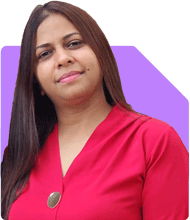Ramalingam Kalirajan |10270 Answers |Ask -Follow
Mutual Funds, Financial Planning Expert - Answered on Jul 04, 2024
He has an MBA in finance from the University of Madras and is a certified financial planner.
He is the director and chief financial planner at Holistic Investment, a Chennai-based firm that offers financial planning and wealth management advice.... more

My Age is 47, my current saving is as follows 1. EPF : 30 L 2. MF & Equity : 2 L 3. FD : 60L 4. ULIP : 15 One parental house , one kid who is studing class 12 th kindly suggest after retirement need 1.5 L / month
Let’s dive into the best strategies to achieve this.
Analysing Your Current Investments
EPF (Employee Provident Fund)
EPF is a great way to save for retirement with tax benefits. It offers a stable and secure return. However, it might not be enough to meet your monthly needs alone.
Mutual Funds and Equity
Your Rs. 2 lakhs in mutual funds and equity is relatively low. Equity and mutual funds can provide high returns, especially over long periods. These can be volatile in the short term but tend to grow well over time.
Fixed Deposits (FD)
You have Rs. 60 lakhs in fixed deposits. FDs are secure but offer lower returns. These are good for preserving capital but not the best for wealth creation.
ULIPs (Unit Linked Insurance Plans)
ULIPs combine investment and insurance. While they offer some returns, the charges and fees can be high. They might not be the best option for investment growth.
Parental House
Real estate can be a valuable asset, but it’s not as liquid as other investments. It’s great for security but not ideal for generating monthly income.
Setting Financial Goals and Strategies
Retirement Corpus Calculation
To generate Rs. 1.5 lakhs per month post-retirement, you need to build a substantial corpus. Assuming a 4% withdrawal rate, you would need a corpus of around Rs. 4.5 crores. This ensures you don’t outlive your savings.
Diversification for Stability and Growth
Diversifying your investments is crucial. Don’t rely on a single investment type. Spread your money across various asset classes like equity, debt, and hybrid funds. This balances risk and return.
Optimising Your Current Portfolio
Increasing Mutual Fund Investments
Invest more in mutual funds for long-term growth. Choose a mix of equity and hybrid funds. Equity funds have high growth potential, while hybrid funds balance risk. Actively managed funds can outperform index funds, providing better returns.
Surrendering ULIPs
Consider surrendering your ULIPs. The high fees and charges reduce returns. Reinvest this money into mutual funds for better growth. Regular funds through a certified financial planner (CFP) offer guidance and better returns than direct funds.
Reducing Fixed Deposits
While FDs are safe, they offer lower returns. Reduce your FD investments and move some of this money into mutual funds or debt funds. Debt funds provide better returns than FDs with moderate risk.
Planning for Post-Retirement Income
Systematic Withdrawal Plan (SWP)
Use a systematic withdrawal plan from your mutual fund investments. This provides a regular income post-retirement while keeping your principal invested. It’s tax-efficient and ensures you get a steady income.
Balancing Risk and Return
Post-retirement, focus on a balanced portfolio. Include equity for growth and debt for stability. This ensures your portfolio grows while providing a steady income.
The Power of Compounding
Early and Regular Investments
Start investing early and regularly. The power of compounding grows your wealth significantly over time. Even small regular investments can lead to substantial growth.
Reinvesting Returns
Reinvest your returns to benefit from compounding. This accelerates your portfolio growth and helps you reach your financial goals faster.
Assessing the Risk Factors
Market Volatility
Equity markets can be volatile. But over the long term, they tend to provide high returns. Diversification helps manage this risk.
Inflation
Inflation reduces the purchasing power of your money. Invest in assets that outpace inflation, like equity and hybrid funds.
Longevity Risk
Plan for a longer retirement. Ensure your corpus lasts by investing wisely and managing withdrawals.
Benefits of Professional Guidance
Certified Financial Planner (CFP)
A CFP provides expert advice tailored to your goals. They help you navigate complex financial decisions and optimise your portfolio.
Regular Fund Investments
Investing through a CFP in regular funds offers advantages. You get professional management, better fund selection, and ongoing advice.
Creating a Robust Retirement Plan
Setting Clear Goals
Define your retirement goals clearly. Know how much you need monthly and plan your investments accordingly.
Regular Reviews and Adjustments
Review your portfolio regularly. Adjust your investments based on market conditions and your changing needs.
Building a Safety Net
Emergency Fund
Maintain an emergency fund. It should cover at least 6-12 months of expenses. This provides security against unexpected financial needs.
Health Insurance
Ensure you have adequate health insurance. Medical costs can deplete your savings quickly. A good health insurance plan protects your wealth.
Future-proofing Your Finances
Estate Planning
Plan your estate to ensure your assets are distributed according to your wishes. This includes making a will and considering trusts if needed.
Tax Planning
Optimize your investments for tax efficiency. Use tax-saving instruments and plan withdrawals to minimise tax liabilities.
Final Insights
Planning for retirement is a journey that requires careful consideration and strategic planning. Your current savings provide a strong foundation, but optimizing your investments can help you achieve your goal of Rs. 1.5 lakhs per month post-retirement.
By diversifying your portfolio, increasing your exposure to mutual funds, and leveraging professional guidance from a Certified Financial Planner, you can balance growth and stability. The power of compounding, combined with regular reviews and adjustments, will ensure your financial security and peace of mind in retirement.
Remember, the key to successful retirement planning is starting early, staying disciplined, and making informed decisions. Your future self will thank you for the efforts you put in today.
Best Regards,
K. Ramalingam, MBA, CFP,
Chief Financial Planner,
www.holisticinvestment.in
You may like to see similar questions and answers below
Ramalingam Kalirajan |10270 Answers |Ask -Follow
Mutual Funds, Financial Planning Expert - Answered on Apr 30, 2024
Ramalingam Kalirajan |10270 Answers |Ask -Follow
Mutual Funds, Financial Planning Expert - Answered on Apr 17, 2024
Ramalingam Kalirajan |10270 Answers |Ask -Follow
Mutual Funds, Financial Planning Expert - Answered on Jun 04, 2024
Ramalingam Kalirajan |10270 Answers |Ask -Follow
Mutual Funds, Financial Planning Expert - Answered on Jul 16, 2024
Ramalingam Kalirajan |10270 Answers |Ask -Follow
Mutual Funds, Financial Planning Expert - Answered on May 30, 2025
Radheshyam Zanwar |6396 Answers |Ask -Follow
MHT-CET, IIT-JEE, NEET-UG Expert - Answered on Aug 18, 2025
Radheshyam Zanwar |6396 Answers |Ask -Follow
MHT-CET, IIT-JEE, NEET-UG Expert - Answered on Aug 18, 2025
Anu Krishna |1680 Answers |Ask -Follow
Relationships Expert, Mind Coach - Answered on Aug 18, 2025
Nayagam P P |10359 Answers |Ask -Follow
Career Counsellor - Answered on Aug 18, 2025
Nayagam P P |10359 Answers |Ask -Follow
Career Counsellor - Answered on Aug 18, 2025
Nidhi Gupta |211 Answers |Ask -Follow
Physiotherapist - Answered on Aug 18, 2025
Nayagam P P |10359 Answers |Ask -Follow
Career Counsellor - Answered on Aug 18, 2025
Nayagam P P |10359 Answers |Ask -Follow
Career Counsellor - Answered on Aug 18, 2025
Nidhi Gupta |211 Answers |Ask -Follow
Physiotherapist - Answered on Aug 18, 2025
Nayagam P P |10359 Answers |Ask -Follow
Career Counsellor - Answered on Aug 18, 2025










.jpg)












